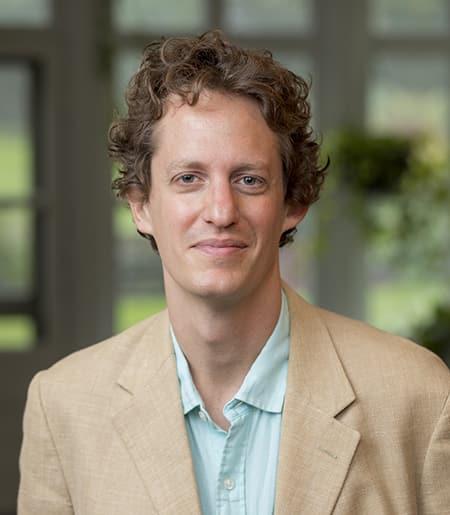Overview
James A. Redfield is Assistant Professor of Biblical and Talmudic Literatures in the Department of Theological Studies at Saint Louis University. He received his PhD in Religious Studies from Stanford in 2017 and holds an MA in Anthropology (UC Berkeley, 2010). His main areas of scholarship are Talmudic literature and the history of anthropology. He has published in other areas of the humanities as well as translations of scholarship and literature from French, German, Hebrew, and Yiddish. He teaches graduate courses on late ancient Jewish and Christian literature; the Hebrew Bible; and medieval Jewish hermeneutics. His undergraduate courses focus on the Hebrew Bible; the cultural history of Jewish law; and travel writing/ethnography.
Research Focus
Open House: Curiosity and Culture in Early Rabbinic Law
How did the rabbis of 2nd-4th century Roman Palestine think about what we call "culture"? How did they do what we call ethnography (the description of culture) and anthropology (its theory)? The answer is as complicated as the question. A meaningful comparison requires both detailed study of this branch of their intellectual practice in its context, and analysis of our own culture-concept. By undertaking it, this project aims to better glimpse the rabbis by way of a modern discipline and, ultimately, vice versa; to open new paths for anthropological thinking from within the ancient sources.
The argument is organized around four indigenous categories of the early rabbis' cultural inquiry and theory. All four became prominent keywords; titles; texts; and discourses in their legal canon: Idolatry; Superstition; Manners; and Customs. By, first, exploring how editors of rabbinic sources evolved and applied each of those categories to regulate the border between normative and cultural existence, each chapter begins with a philological-historical reconstruction of the process whereby they theorized "culture," as well as its implications for internal and external shifts in their horizons. This reconstruction coordinates the tools and bibliography of scholarship on rabbinic sources (including medieval scholarship) to pinpoint a lingering problem in modern analysis of each category. At the second, comparative stage, each chapter ventures into a moment in modern conceptual history. It explores a cluster of figures and problems which carved a slice of our culture-concept that is useful for better understanding our problem with the rabbis and, by way of analogy, revisits the old problem anew. The most general thesis arising from this method is that for the rabbis, culture played a meta-legal role: it redefined their legal tradition (halakhah) in terms of its limits and served as a foil for wrestling with their significance, expanding or contracting those limits according to context. Early rabbinic law does not reflect a single theory of culture or a systematic method of ethnography, but it was a more permeable intellectual tradition than it has seemed to many, fueled by a dialectic between cultural curiosity and the will to normative closure. Its energy springs from the contradiction.

